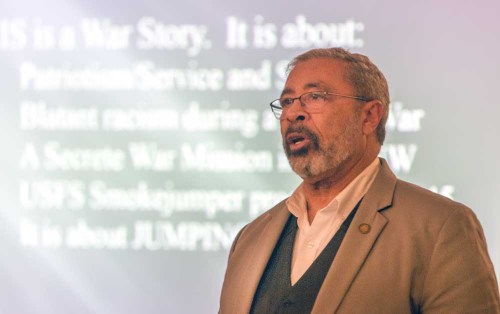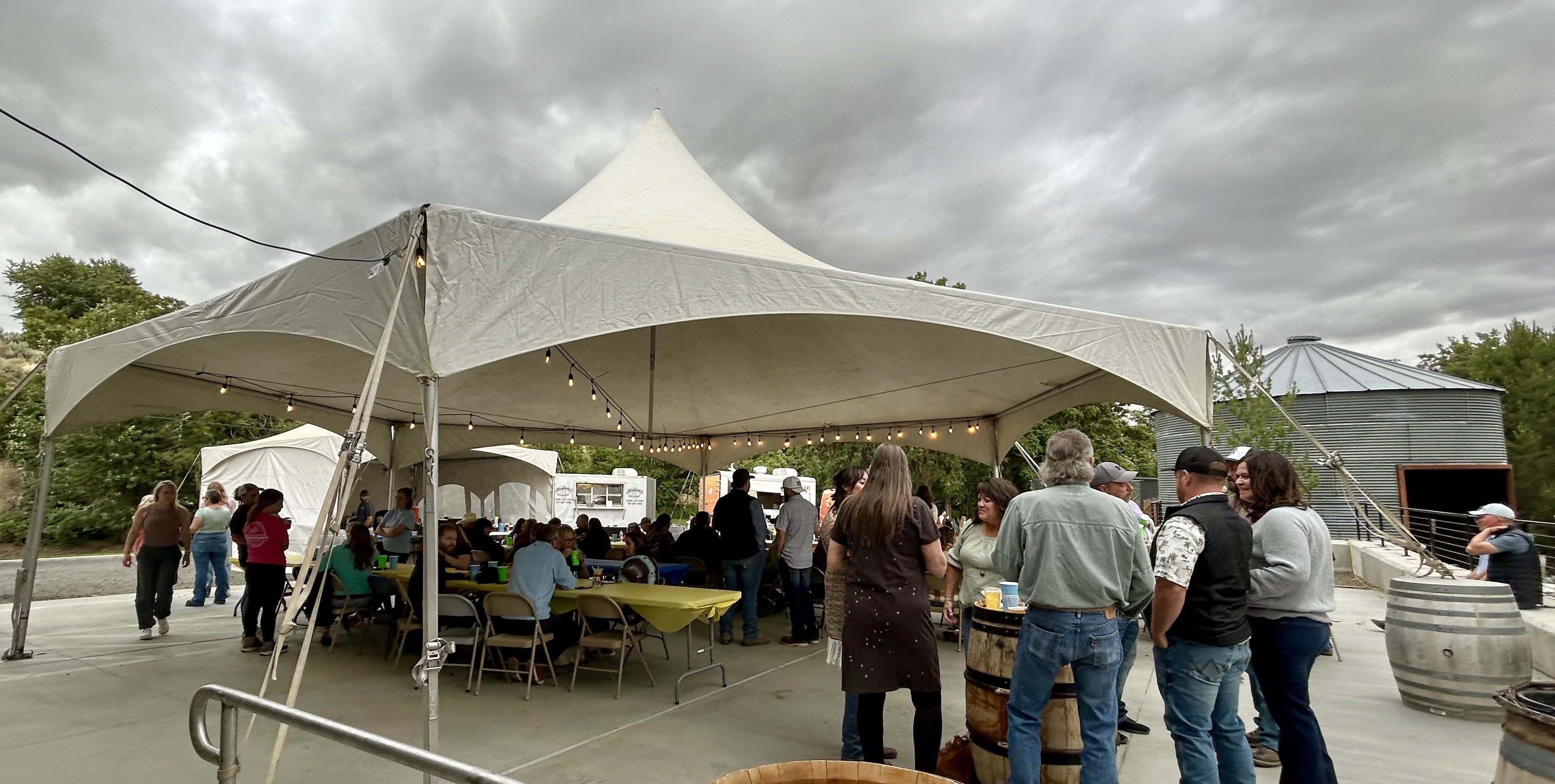Jumping into history
Published 10:18 am Wednesday, May 8, 2019

- Robert Bartlett talks about the Triple Nickles at a recent gathering of the American Association of University Women in Pendleton. A similar talk last year at the Oregon Grain Growers sparked an effort to honor the all-black military smokejumper unit.
It’s never too late to make amends.
A marker honoring an all-black paratrooper unit stationed at Pendleton Field, also known as Pendleton Army Air Base, in 1945 will be installed on Main Street this summer. The 555th Parachute Infantry Battalion nicknamed the Triple Nickles (the old-English spelling of the word) fought fire in the Northwest.
Between late 1944 and spring of 1945, Japan unleashed more than 9,000 balloon bombs with the goal of setting the West Coast ablaze. As part of Operation Firefly, the paratroopers disarmed bombs and put out fires.
As intrepid as they were, the soldiers didn’t get a lot of love from whites in Pendleton, said Robert Bartlett, senior lecturer at Eastern Washington University.
At a recent presentation to the Pendleton chapter of the American Association of University Women, Bartlett read from a letter written by Bradley Biggs, who went on to retire as an Army lieutenant colonel.
“In town, the reception was cold,” Biggs wrote. “We could not eat in any of the restaurants in town and found it difficult to buy a drink or a meal. Hotels would not serve us.”
Bartlett, who spends a lot of time enlightening people about the Triple Nickles, said it frustrates him how little today’s Pendletonians know about the unit. An effort to honor the jumpers was started after another of Bartlett’s talks during a History Happy Hour last year at the Oregon Grain Growers. A five-person task force was formed to look into creating an information marker. A $2,500 grant from Umatilla County will pay the bulk of the cost. Pendleton Underground Tours donated the remaining $1,000.
The 3-foot-by-4-foot official state marker will be installed this summer on Main Street near the Pendleton Air Museum and the Pendleton Underground. A plaque will feature photos, quotes, description of the paratroopers’ accomplishments and the Triple Nickles’ buffalo nickel logo.
Guiding the effort is the Oregon Travel Information Council, a semi-independent state agency which created the design, vetted the information on the marker and is overseeing production. The organization contracts to oversee and maintain all of the state’s official markers.
Annie Von Domitz, OTIC’s heritage and community assets manager, originally contacted Travel Pendleton’s Kristen Dollarhide about the idea of commemorating the Triple Nickles. The History Happy Hour was Dollarhide’s way of gauging community interest.
Raising money and interest for such a marker takes commitment, Von Domitz said, saying “Pendleton really stepped up. It was a very grassroots effort.”
Bartlett, who met with the local task force, applauded the community for reclaiming a forgotten past.
“The marker commemorates these men being here,” he said. “It was such an amazing mission they undertook, to jump into the mountains and fight fires. It was history in the making.”
This was dangerous work, he said. The paratroopers jumped out of C-47 planes into often unfriendly terrain. Often, they had to land in trees and let themselves down with ropes. Their parachutes were far less maneuverable than those used by today’s smokejumpers.
The first smokejumper ever to die on a fire jump was a Triple Nickle. Malvin Brown was killed after his chute snagged in a tree and he fell to his death.
At the recent AAUW gathering, Bartlett quoted Lt. Walter Morris who described standing in the doorway of a C-47 “Skytrain” that flew at 1,500 feet at 150 miles per hour.
“Why was I standing here on my way to a dangerous mission that could possibly get me and my men killed for a country that thinks so little of me and my people?” Morris wrote. “Why should I die for a country that thought so little of me and my people?”
The men were on the way to fight not the Germans or the Japanese, but a raging forest fire on the Mount Baker National Forest. Not going to the front was tough for the men to swallow, Bartlett said. They had trained and were ready to go, but instead were ordered onto a troop train bound for the West Coast.
“Lots of guys were chomping at the bit to go (to Europe),” Bartlett said. “They wanted to show Hitler that Jessie Owens was not the only black guy who could best Germans.”
By the end of Operation Firefly, the Triple Nickles fought 28 fires in six states and southern Canada. Besides Brown’s death, the unit also suffered 30 injuries, including broken limbs, dislocated knees, a crushed chest and a broken back.
“They wanted to serve. This was their mission,” Bartlett said. “The marker is a way of cementing that story. Pendleton is where it all started.”
Contact Kathy Aney at kaney@eastoregonian.com or 541-966-0810.





